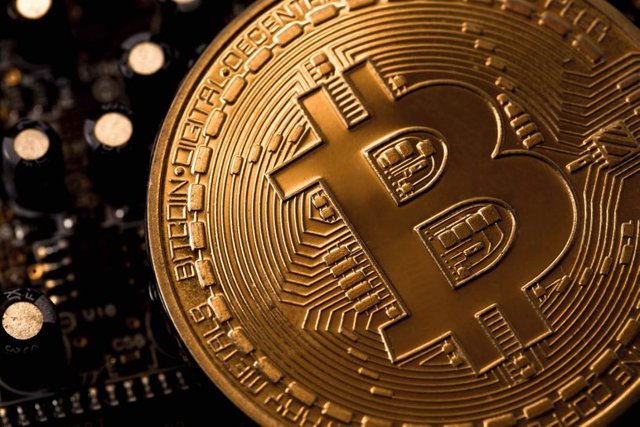Blockchain Knowledge Centre India - Lesson 1
Blockchain Knowledge Centre India - More Info
The Vison of this Centre is to Teach People HOW to Safely BUY / SELL and INVEST in Cryptocurrecy without Getting SCAMMED or taken advantage of.....
Teach them hoe to invest with CALCULATED RISK...
Cryptocurrencies and Bitcoin
In Lesson 1 you will learn:Cryptocurrencies are decentralized digital currencies secured with cryptographyBitcoin is the top cryptocurrency due to its first-mover advantageBitcoin was created by Satoshi NakamotoBitcoin is only in its infancy period with huge growth potential
Why cryptocurrencies?
Cryptocurrency is a new type of digital money used to exchanged agreed-upon values. It is just like regular currency, except it uses cryptography to secure transactions and control the creation of its native currency.In centralized financial systems—such as the U.S. Federal Reserve system—government and banks control the supply of currency. They essentially “print” units of this currency, which is called fiat. When centralized entities operate in this fashion often times the “fiat” system can be inflationary. By contrast, a lot of cryptocurrencies like bitcoin have a capped supply, although some digital assets do not. This means currencies like bitcoin are produced by a cryptocurrency protocol at a predetermined, set rate.The supply is capped at a specific amount. Bitcoin’s cryptographic financial system is built on a peer-to-peer, open source, and decentralized network. The currency is not controlled by one person or organization, and their specifications are not easily altered without consensus on the network.The great thing about cryptocurrencies is that you can send and receive money anywhere in the world at any given time. You don’t have to worry about bank hours, formal permission or any other limitations. You can make and complete payments in bitcoin without anyone’s personal information being tied to the transactions, therefore it also protects against identity theft.The fees involved are usually also low, compared to legacy systems like Western Union. Bitcoin payments are irreversible and secure, meaning that merchants don’t have to worry about the cost of fraud.
Introducing Bitcoin
Bitcoin pioneered the field as the first decentralized cryptocurrency back in 2009 and the decentralized control is by use of Bitcoin’s distributed ledger, called the blockchain. Bitcoin is by far the most popular digital currency and it has tens of thousands of programmers and entrepreneurs around the world developing new services and apps. Like most other cryptocurrencies, Bitcoin is not controlled by any single government or central bank, and no one can decide who is allowed to send or receive money. Bitcoin transactions are censorship resistant.

This means that no one, including banks, or governments, can block you from sending or receiving bitcoins.Bitcoin was the first decentralized digital currency and has had time to gain acceptance among both merchants and consumers. It is considered very safe compared to other digital currencies, it has no third parties, and the protocol is open source (i.e. its code is peer-reviewed by a large community of developers).
It is also the first digital currency to implement the blockchain as a core component. All these factors have helped attract the open source developer community to the currency.The no-VAT ruling in Europe has also helped to enhance the popularity and value of the currency, and today most countries around the world allow bitcoin as a payment method. Many companies now also accept bitcoin as a method of payment.
From restaurants and coffee shops, to real estate companies and online shops, Bitcoin is now accepted by a wide variety of establishments. It also has a strong advantage over its competitors because of important network effects like adoption-rate and developer mindshare.
The Past, Present, and Future
Bitcoin was created by an anonymous person or group who called themselves Satoshi Nakamoto. Nakamoto published the invention on October 31, 2008, to the Cryptography Mailing list called metzdowd.com. The research paper was called “Bitcoin: A Peer-to-Peer Electronic Cash System”. It was implemented in its first client and released to the open source community in January 2009.The Bitcoin network came into existence on January 3, 2009, with the release of the first Bitcoin software and the issuance of the first bitcoins. Satoshi Nakamoto continued to collaborate with other developers on the bitcoin software until mid-2010. Around this time, he handed over control of the source code repository to the bitcoin developer Gavin Andresen.Nakamoto also transferred several related domains to various prominent members of the bitcoin community, and then stopped his involvement in the project. Prior to his absence and handover, Satoshi Nakamoto made all modifications to the source code.At first, the initial exchange rates for Bitcoin were set by individuals on online forums. The first “famous” transaction was the infamous 10,000 bitcoin pizza purchase, worth around 20 million USD eight years later. Today, however, most bitcoin exchanges are made through online trading platforms.In 2013, several mainstream websites began accepting bitcoin. WordPress started in November 2012, followed by OKCupid in 2013. In 2014 several major vendors started to accept bitcoin, including TigerDirect, Overstock.com, Expedia, Dell, and Microsoft.With bitcoin’s transactional volume increasing every day, a cap on supply, and an ongoing reduction in bitcoins produced, bitcoin values should continue on an upward trend. Compare this to most all fiat (paper) currencies which lose value every year due to inflation.The digital currency has not gone viral yet, and many of the apps, upgrades, and protocols that will make it truly ready for common use are still being developed, so the potential is still huge. We’ve probably only scratched the surface of what Bitcoin can do.